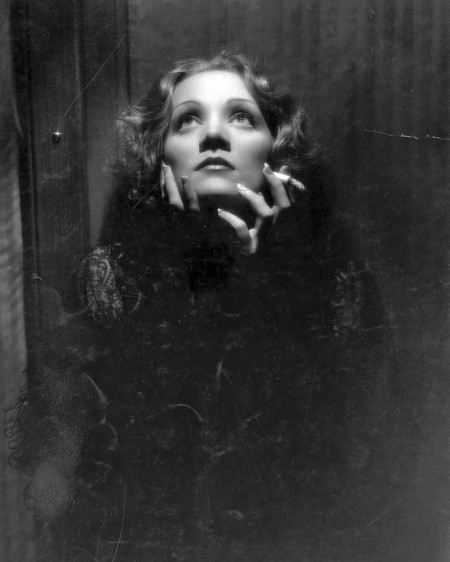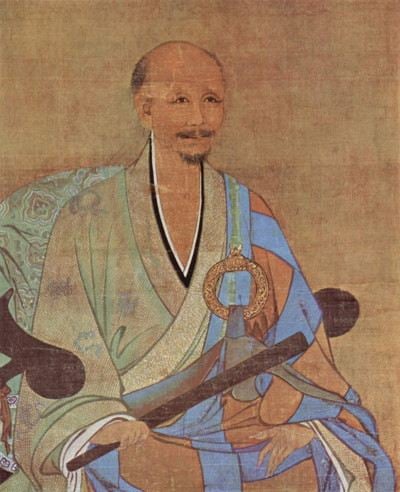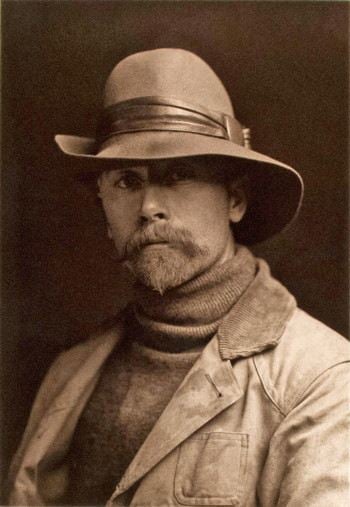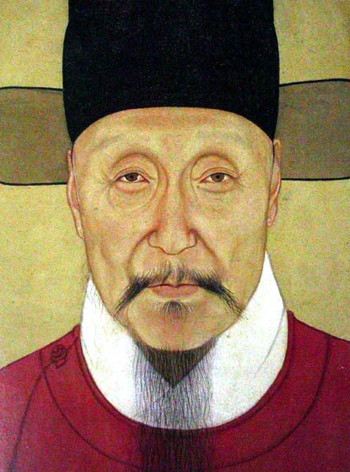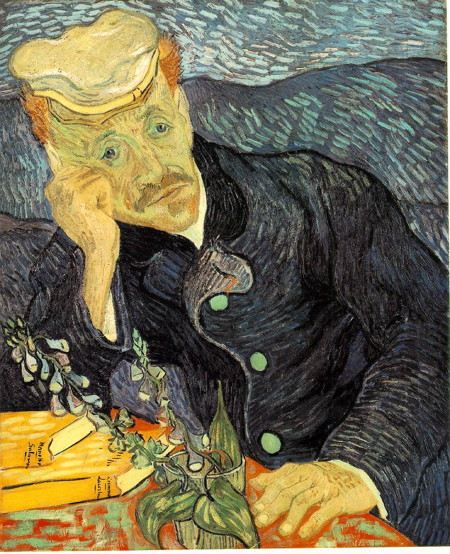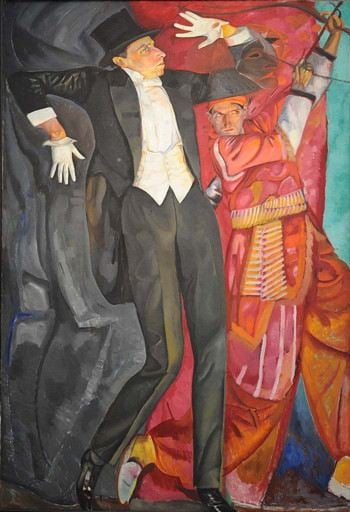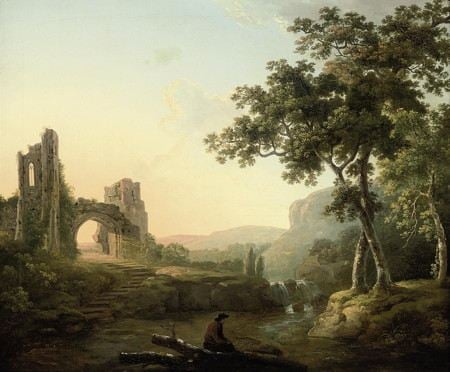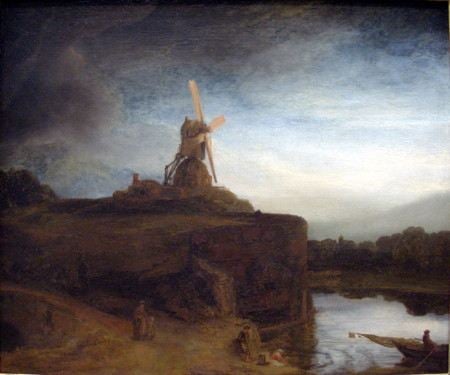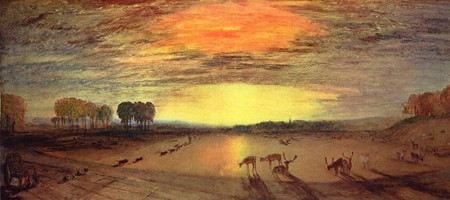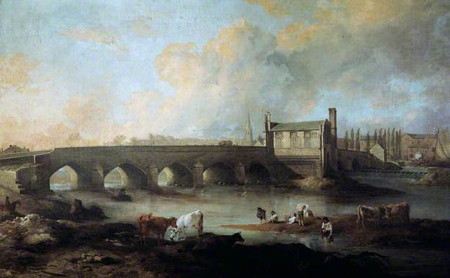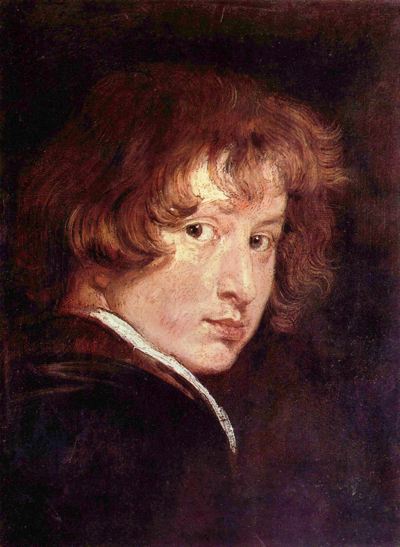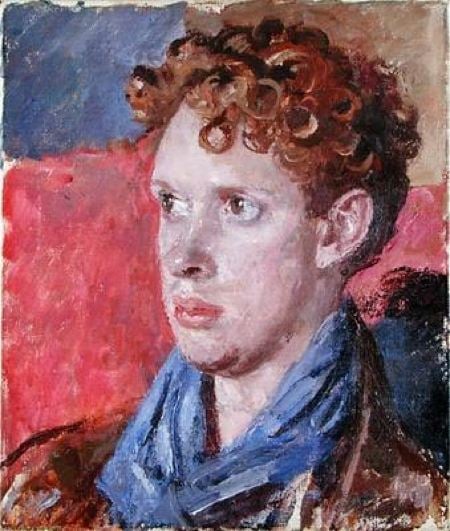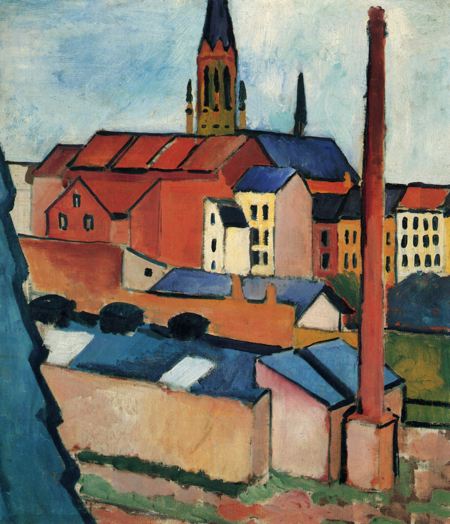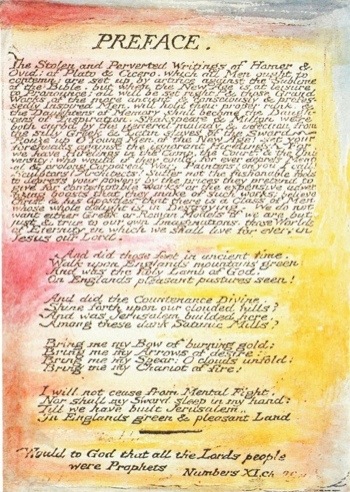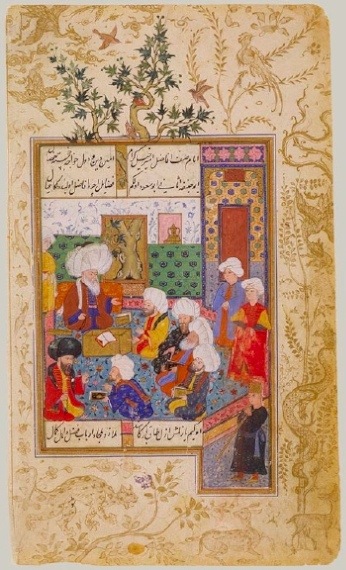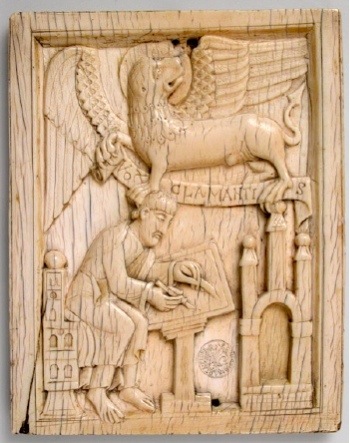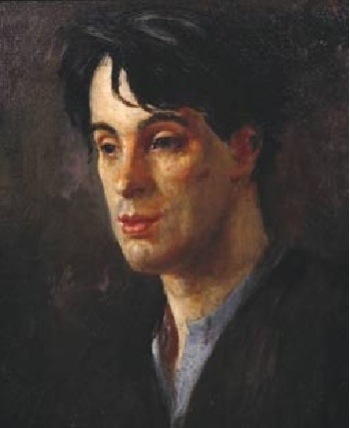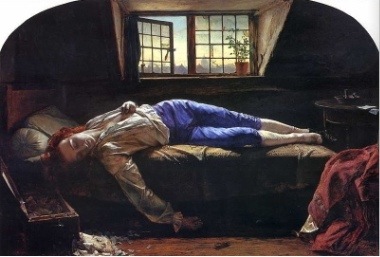“You’ve Got to Hide Your Love Away”
Lennon-McCartney
The Beatles
“Smile”
Charlie Chaplin
Tony Bennett
“Song for Athene”
John Tavener
Stephen Cleobury & King’s College Choir, Camboridge
“In My Life”
Lennon-McCartney
The Beatles
“The Tyger”
John Tavener
Harry Christophers & the Sixteen
“Will the Circle Be Unbroken
A. P. Carter
Gregg Allman
What a Piece of Work
Publicity photo of Marlene Dietrich for the film Shanghai Express (1932)
Don English; Paramount Pictures
http://en.wikipedia.org/wiki/File:Marlene_Dietrich_in_Shanghai_Express_(1932)_by_Don_English.png
The songs run us through a gamut of human emotions, the fear we often have of showing our feelings, the ability to find bits of joy and happiness in the face of suffering or adversity, the impulse to worship, if not a deity, works of nature or the marvels of the cosmos, the need to reflect on and contemplate our lives and how they are lived, feelings of fear and anxiety, and the desire for community, for friends and family and the need to keep them close even after death by preserving memories and traditions. Part of preserving that community also involves earning and keeping respect. We want those who are close to us to not just like us, but to at some level admire something about us. And this is more than an egotistical desire it is a part of how we earn our place in that community and though that place need not necessarily be earned in the eyes of the community, it does need to be earned in our own eyes. In this sense this admiration is a kind of affirmation.
Portraits are often revealing, like the songs they too capture a gamut of emotions. The portrait of Marlene Dietrich is suggestive. I have not seen the film so I do not know the context of the emotions that are portrayed in the photograph, but there seems to be in her eyes and expression a longing and a yearning. She looks like someone who is troubled and alone. But whatever the context, as a portrait it reveals an inner life, an inner consciousness. Hamlet in one of his madder moments says, “What a piece of work is a man! how noble in reason! how infinite in faculty! in form and moving how express and admirable! in action how like an angel! in apprehension how like a god! the beauty of the world! the paragon of animals!” Is this list of qualities the product of madness or is there reason and method to it? What would his portrait reveal if it were painted at this moment? Many of the characters in this play are at their most profound when they are at their most unreliable. Polonius tells his son, “This above all to thine own self be true.” This from a man who has probably not been true to himself at any moment in the play. He knows how to speak wisely, but he does not know how to act wisely. And those who speak a wisdom they cannot perform are seen as foolish and pompous, and a bit absurd.
Self Portrait Created for an article for wikipedia on window light photography
Hari Bhagirath
http://en.wikipedia.org/wiki/File:Hari_bhagirath_window_light_portrait.jpg
Of course, if we are honest with ourselves we are all of us too much of the time a bit like poor Polonius. Wisdom, like so many things of value, is more easily pronounced than performed. Polonius is also representative of an important office of literature in that it confronts us with a choice. We can sit in judgment on Polonius, and we probably should, or we can take our reading or viewing of the play a step further and reflect on the “Polonius” in ourselves. Reading well often involves personalizing what we read, measuring ourselves against characters, events, and choices that are made. This is not seeing ourselves in the characters but measuring ourselves by the same yardstick we measure these characters. The Guardian is publishing a series of articles by Robert McCrum on the hundred best novels in English (it begins with, “The 100 best novels: No 1 – The Pilgrim’s Progress by John Bunyan (1678)” and he is now up to twelve, “The 100 best novels: No 12 – Jane Eyre by Charlotte Brontë (1847)“). He at one point in the process stops and asks himself and us, how he/we should go about forming this list (“How to choose the 100 Best novels”). As an English teacher I find the lists and short articles interesting. There is an arbitrary quality to this list, McCrum tells us, for example, that authors like Walter Scott have been left out not because they have been found wanting, but because his knowledge of their work is wanting and he does not feel competent to judge them (which is very likely true of everyone who compiles such lists). But the books he has chosen are varied and interesting and they all raise a number of issues that are meaningful to me as a reader. They are books I have read and continue to read not because they are good for me, they are of course, but that is not why I read them, but because they move me and provoke in me powerful emotions, powerful questions, and important issues. They often confront me with goodness and with its absence.
Portrait of Chinese Chan-Buddhist monk Wuzhun Shifan
Chinese artist in the year 1238
http://en.wikipedia.org/wiki/File:Chinesischer_Maler_von_1238_001.jpg
An article in the New York Review of Books asks “What Is a Good Life”? I misread the title when I first saw it and thought it was asking, “What is the good life?” A very different question in many ways. The article is about a study that followed a number of Harvard graduates from the classes of 1939 through 1944. The study is the longest running study that has ever been done, or is being done, as it is still in progress. It’s followed 268 graduates from graduation to the present and will continue until the last participant dies, or so the article suggests. Along the way it has incorporated into itself participants from a number of other studies following folks from very different backgrounds. The study has problems but what it wanted to discover is what makes a happy life. The assumptions at the time the study began were that a happy life was defined in terms of prosperity, comfort, success, and leisure. It consisted of a good job, a good marriage, and well behaved children who grew to have good jobs and good marriages as well. One conclusion that was drawn was that those with a modest intelligence (the Harvard folks had better than modest intelligence, but others blended into the study at a later date were of a more modest intelligence, at least according to the tests that measure such things) and a good education (who went to college) were more likely to find jobs with comfortable incomes and in the end were more likely to be happy. They were also more likely to be healthier and to live longer.
The article raises many questions about the studies findings, largely because the study lacked a clear focus at the beginning and changed its focus as it progressed. But the question still remains, is leading a good life the same as leading the good life. Do we define a good life in terms of how happy and content we are or do we define it in other ways. Can we have a good life and at the same time be bad people? Does it matter? What does it mean to be “good” and what does it mean to be “bad?” These are questions the study does not seem to consider, though aspects of the study looked at what factors might lead to a life of crime. But what if in order to be fully human or to be fully content as humans we need to know what it means to be good and how goodness is best achieved? How important is an education to living the good life, as opposed to a good life?
Photo – Black and White – Augusto De Luca photographer
Augusto De Luca
http://en.wikipedia.org/wiki/File:Black_and_White_1_-_Augusto_De_Luca_photographer.jpg
Does literature and its study offer us insight into this, does it answer these questions. Lee Siegel thinks, “Fictions lack of practical usefulness is what gives it its special freedom.” (“Should Literature Be Useful”) He says of literature’s ability to arouse and develop empathy, “Yet even if empathy were always the benign, beneficent, socially productive trait it is celebrated as, the argument that producing empathy is literature’s cardinal virtue is a narrowing of literary art, not an exciting new expansion of it.” Though I believe empathy is something we learn from literature, even if we are not particularly good readers, it is not the only thing or even the most important thing to be gotten from reading literature. The freedom that reading can give us is often freedom from our circumstances; it offers us an opportunity to escape, not so that we can avoid the world, but so that we can have time away from it in order to renew our strength and recover the energy we need to confront the challenges it puts in our way. Sometimes we need to leave the world in order to experience what the world ought to be and to reacquaint ourselves with a good and a just society. On the other hand, it can show us what real injustice and tyranny are and in so doing suggest to us that things in our world may not be as bad as we were inclined to believe, stories often rekindle hope and optimism. But as Siegel says, it does many things and no catalog can capture all of them.
Self Portrait
Edward S. Curtis
http://en.wikipedia.org/wiki/File:ECurtis.jpg
Charlotte Higgins in an article on The Odyssey “The Odyssey: a soldier’s road home,” examines ways that reading can bring healing, in that it suggests that others before us have experienced what we are experiencing and we can than learn from that experience. It is often suggested that old books have little to teach us, that they are boring, uninteresting, and tedious, among other things; but more often they are true and perhaps the greater problem with reading books in school is that students do not have the knowledge or experience that enables them to see that truth. Students often like The Odyssey because it is an adventure and so many strange and unusual things take place. They are carried away by the story without identifying overly much with Odysseus or his struggles on his long voyage home. But, according to Higgins, many soldiers returning from combat have struggled with emotions not unlike those that Odysseus struggles with in the course of his story. There are truths to which we are born with a certain understanding or acquire that understanding early in life. There are other truths we grow into, not that these truths weren’t true before we grew into them, they just were not a conscious part of our lives and experience.
Self Portrait
Raphael
http://en.wikipedia.org/wiki/File:Sanzio_00.jpg
Edward Short in an article on Gerard Manley Hopkins, “Agony of Spirit,” suggests that there is an ecstasy of language that stimulates the poet in the writing of his poetry and the reader in the reading of it. Hopkins has always fascinated me because no matter what he did he always managed to put himself at odds with those around him. He became a Catholic in a country, England, that did not care much for Catholics, and he not only became a Catholic, but he became a Jesuit, which was the order within the Catholic Church the English liked least. When the Catholic Church sent him to Ireland to teach he supported the English monarchy in a country that was trying to rid itself of the monarch. His poem “The Wreck of the Deutschland”, a poem in which he took great pride, was totally incomprehensible to those within his order who discarded it (the poem is an elegy on the deaths a group of nuns in a shipwreck and was submitted to a Catholic journal for publication). Robert Bridges published Hopkins’ poems as a tribute to his friend who had died, but he did not fully understand the poems or their significance. The article suggests that the poems were Hopkins’ way of studying and learning patience. Poets of many stripes have struggled with their art and the societies in which they lived and the poems are often the working out of this struggle (“The Sedgwick brothers’ top ten facts about William Blake,” “Last Words,” “The Imaginative Man,” “Enigmatic Dickinson Revealed Online,” and “What can WH Auden do for you?”). Hopkins and the poets in these articles captured the struggles of their times in their poems and through their poems we often find the tools we need to confront the troubles of our times and perhaps the inspiration to do for our times what they did for theirs. But so much of life involves struggle and in seeing the struggles of others depicted with such eloquence we often find strength to confront our own.
Portrait of late Ming scholar-official Ho Bun
Unknonw, perhaps late Ming portrait painter
http://en.wikipedia.org/wiki/File:Portrait_of_Ho_Bun.jpg
Reading also brings comfort. Sometimes we read just to nourish the soul and the spirit. Tim Hanningan, “Comfort Reads: Kim by Rudyard Kipling,” writes about how he takes the novel Kim with him wherever he goes and he talks of taking great comfort from this book. He points out others who have taken comfort from this book as well, in particular a prisoner of war during World War II who trusted an informant solely because his name was Kim and that name evoked for the prisoner the novel that meant so much to him. This, obviously, did not work to his advantage but it does suggest the power the written word can have over us.
Graham Greene in a scene from his novel The Human Factor has his central character, Maurice Castle, use a novel by Anthony Trollope for a “book code.” The character is a double agent within the British Secret Service and Trollope is a novelist whose books could be taken anywhere without arousing suspicion. In describing this scene the narrator tells us that during the Second World War Trollope’s books enjoyed a resurgence of popularity because they captured so well an earlier more peaceful time that the people yearned for in the midst of war. The novels were a kind of “comfort food” for the spirit. Books do not change our reality, the problems still exist, they do not go away, but for a time, in our imaginations, we can go away, our imaginations enable us to recapture a tranquility our circumstances may not permit us to enjoy.
From It’s a Wonderful Life
Frank Capra
Liberty Pictures/RKO Radio Pictures
The film clip gives us a snapshot of George Bailey, an insight into his character. He is waiting to leave a job he did not want to pursue something he has from a very young age yearned to do, to travel, explore, and achieve “great things.” In the scene he is going over with his uncle Billy what he plans to do after his brother, Harry, gets off the train to take over the running of the family business, which will free George to pursue his dreams. He learns, though, that Harry is not going to take over the firm. He will take over the firm if George insists on it, but it is clear that Harry has other plans. As George Baily walks from the train to where his brother’s new bride is waiting we see the inner struggle and as he approaches his brother’s bride we see a hint of a smile and realize he has made his choice, he will stay and let his brother go. It is this kinetic portraiture, the visual images, that communicate this decision, not a word is spoken. Does he make the right choice? In the context of the film he does, but why is this the right choice? Why, in some situations, is the right thing giving up our dream to let others pursue theirs? What makes George Bailey’s decision the right decision? Would we as viewers of the film believing that to be the right decision, make a similar choice if we found ourselves in a similar circumstance?
Jim tells Huck in The Adventures of Huckleberry Finn that most “signs” point to bad things that are going to happen so that we can prepare ourselves for the troubles that are approaching, but that we do not need signs to tell us about the good things, they do not require much in the way of preparation, we just need to be able to enjoy our good fortune. Perhaps sacrifice is a bit like this as well. Stories can prepare us for times when sacrifice is required so that when the time comes we are ready for it, we have thought about our responsibilities and made our decisions before we are actually called upon to make those decisions. But the question still remains, why must I sacrifice? It would not be immoral if George said to his brother “I put in my time, now it’s your turn.” I do not think he would be criticized overly much if he did say so, in fact we might see this outcome as just and fair. But if George had behaved in this way, I think he would have lost stature in our eyes. That is the way with heroes, they do not demand justice for themselves, they do what is the right thing in the unique light of the current circumstances. We look at them and wonder if we share their heroism. We probably want to see ourselves as heroic, but are willing to pay the cost?
Portrait of Dr. Gachet
Vincent Van Gogh
http://en.wikipedia.org/wiki/File:Portrait_of_Dr._Gachet.jpg
Jeanette Winterson in an article on the fairy tales of Oscar Wilde, “Why we need fairytales: Jeanette Winterson on Oscar Wilde,” sees fairy tales as preparing us for the future. They create for children, and for the adults that read them to children, examples of “reversals of fortune” where characters who have had much suddenly find themselves with very little. They are often the story of Job told in a language that is more accessible to children. Hansel and Gretel lose their mother and with this loss they lose everything else as well. The story ends well for Hansel and Gretel, at least it does in the versions we are most familiar with, though I do not think this is true for all versions. For Winterson, Wilde in these stories “prophesied” his coming hardships. But fairy tales often foretell all of our hardships. The world is not fair, God has given the evil one permission for a season to do us harm and we have to come to grips with why has this been permitted to happen. We all have moments when we feel terribly alone when we have not only not done wrong; we have made all the right choices.” (Another article on children’s stories, “How Children’s Books Thrived Under Stalin,” addresses a more subversive aspect of children’s literature.)
Pat Lyon at the Forge
John Nagle
http://en.wikipedia.org/wiki/File:John_Neagle_001.jpg
Reading fills an important role in our lives. As Siegel says often the only role we need to give our attention to is literature’s ability to offer us a kind of freedom. If we approach stories for the liberty they offer, we will get all the rest they have to offer for taking the journey. As a teacher I often struggle on the one hand, with the importance of students reading anything at all for the opportunities the reading gives to young readers. On the other I struggle with the need to help students learn to unravel difficult language so they can explore the depths of what they read and grow in their appreciation of the majesty of language and all of which it is capable. It is also impossible to find stories that every student will enjoy as every student’s tastes, as are every teacher’s, are different. I know most of my students read; I see them with books they are reading (often reading these books when they should be reading other things in class).
Vsevolod Meyerhold
Boris Grigoriev
http://en.wikipedia.org/wiki/File:Grigoriev_Meyerkhold.jpg
Neil Gaiman in a recent article, “Why our future depends on libraries, reading and daydreaming,” discusses the importance of libraries and the reading they foster. He talks of being asked to attend a science fiction conference in China. He is puzzled by this because the government had in the past done all they could to discourage the reading of science fiction. He was told when he asked about this, that they found though their engineers were very good at building things others designed, they were not very good at designing. So they asked all those folks that did the designing in America about what inspired them. The Chinese found that every one of them began by reading science fiction and continued to read science fiction. So the Chinese thought there might be something to this and changed their position.
We live in an age that does not attribute much value to literature, to art, or to music, or the Humanities in general. But they do teach us important things the more practical disciplines like math and science, cannot. It is easy in this environment for students to dismiss literature that demands a lot from them without, on the surface of things as they understand them, promising much in return. But if a goal of our education is to grow in maturity and judgment, there needs to be some focus on what the Humanities can teach us in this regard. The practical arts can teach us how to make a lot of money, but they cannot teach us why making money is important or if it is important.
Too many are not interested in a good education, they are interested in a good paycheck and they see a good education as a route to a good paycheck. It is not the education they want it is the money, and who can blame them; it is money that gets us what we value, it is money that is the surest way to prosperity, power and comfort. An education that makes us thoughtful and reflective, that reinforces values of love of neighbor and community, of liberty and justice often stands in the way of accumulating wealth. Those for whom the object of a good education is a measure of wisdom are often at a disadvantage in the pursuit of success, as it is understood by the world at large. But, perhaps, also, if that measure of wisdom has been attained the pursuit of that kind of success losses its savor.
Swan Princess (Portrait of Nadezhda Zabela-Vrubel)
Mikhail Vrubel
http://en.wikipedia.org/wiki/File:Swan_princess.jpg
